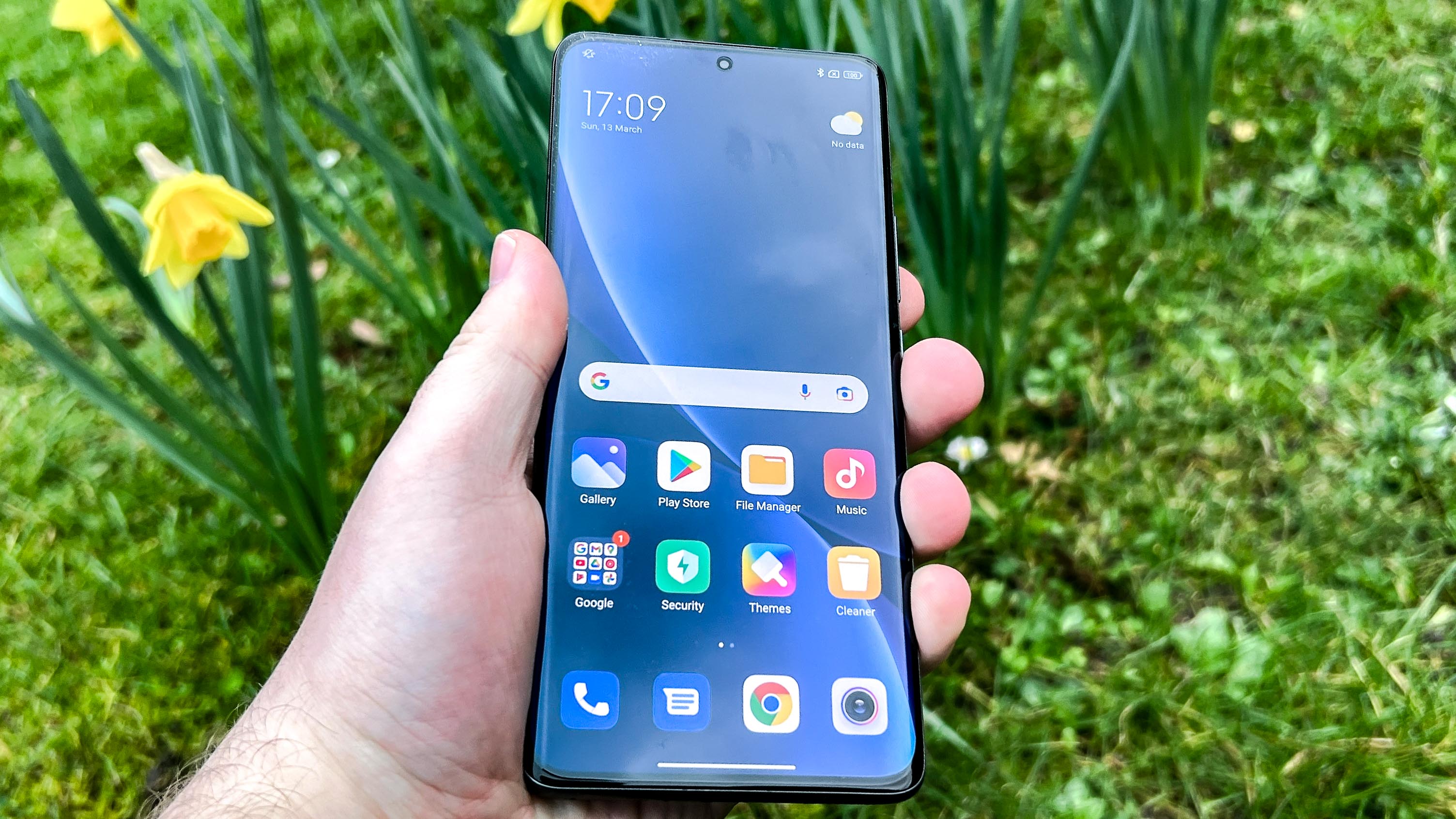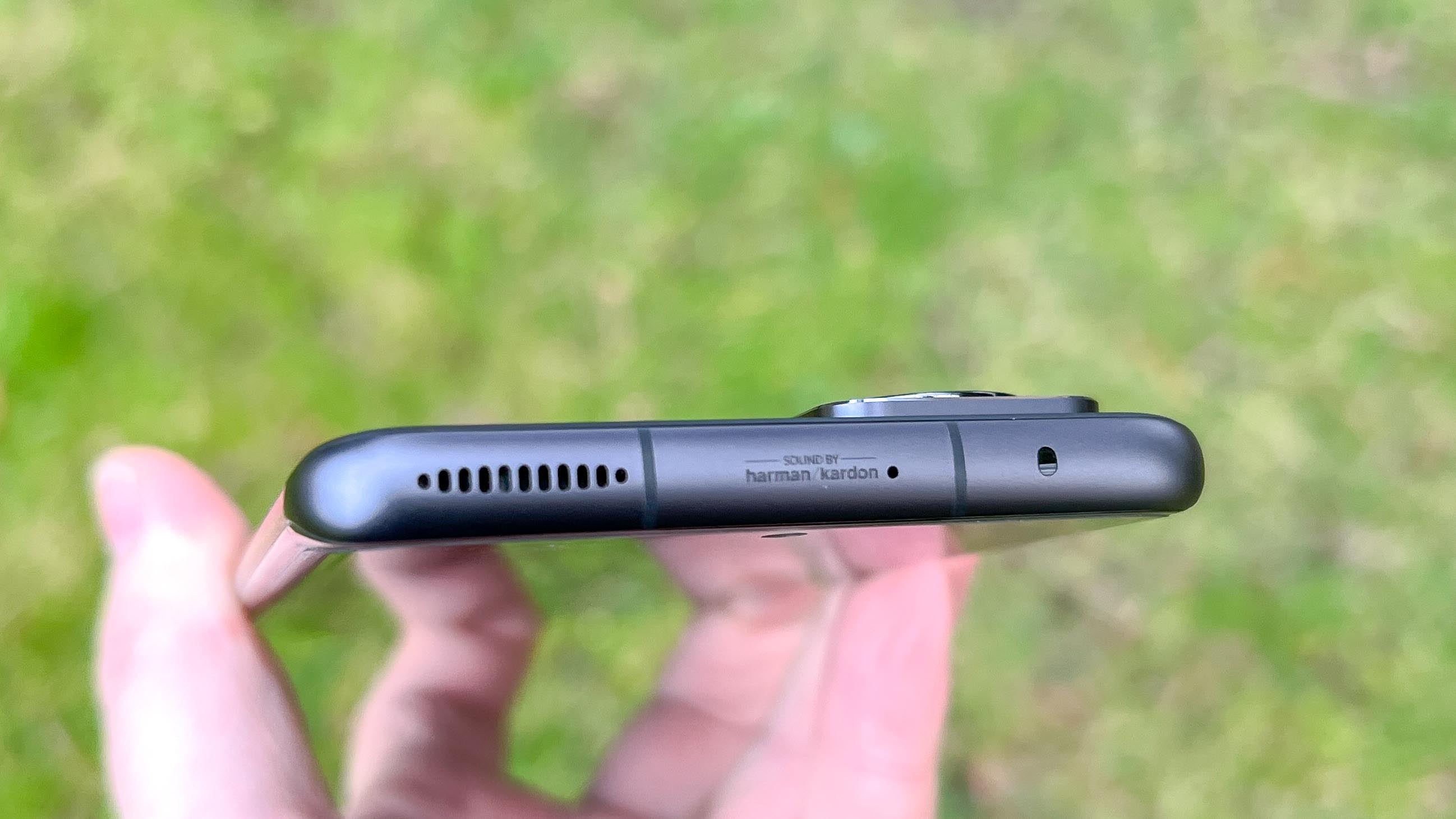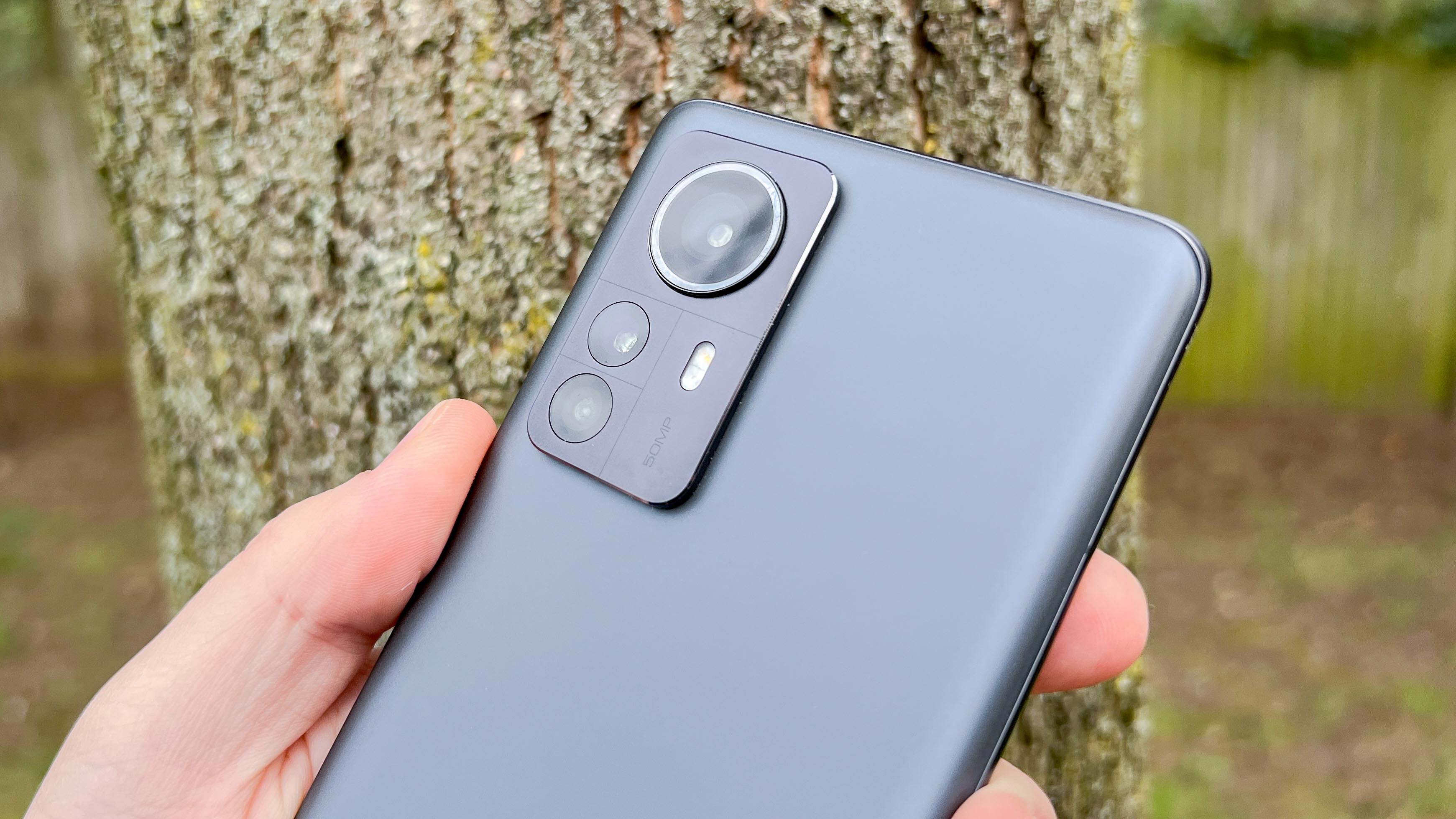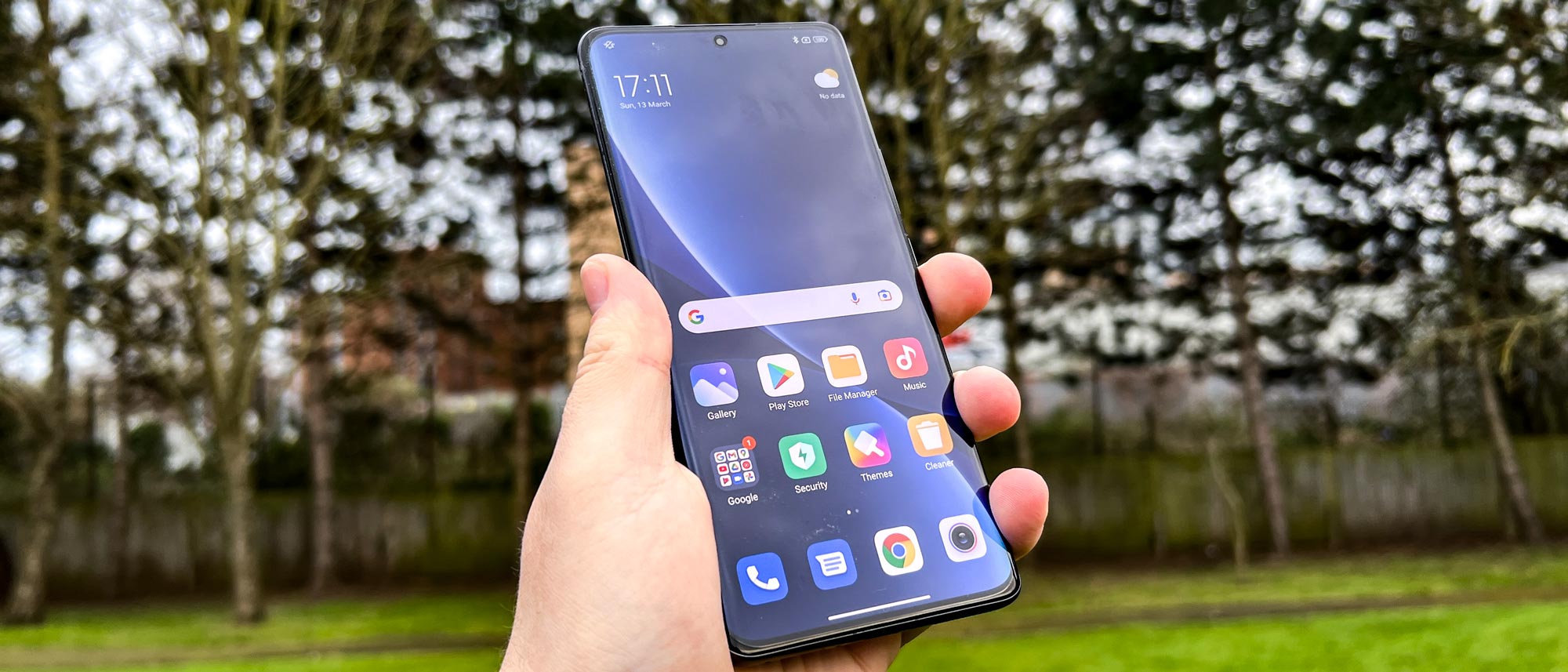Tom's Guide Verdict
With the Xiaomi 12 Pro, Xiaomi is ready to take on the Galaxy S22 Plus and iPhone 13 Pro. The phone gains ground on its rivals by offering some notably better display and charging specs for the same price, but photo and audio quality don’t measure up.
Pros
- +
One of the best displays around
- +
Fastest charging phone we've tested
- +
Good value for a flagship device
Cons
- -
More expensive than previous model
- -
Poor speakers
- -
No U.S. availability
Why you can trust Tom's Guide
Starting price: $999
Display: 6.7-inch AMOLED (3200 x 1440)
Refresh rate: 1 - 120Hz adaptive
Cameras: 50MP main (f/1.9), 50MP ultrawide (f/2.2), 50MP 2x telephoto (f/1.9)
Front camera: 32MP (f/2.45)
CPU: Snapdragon 8 Gen 1
RAM: 8GB/12GB
Storage: 256GB
Battery: 4,600 mAh
Charging: 120W wired, 50W wireless
Operating system: Android 12 with MIUI 13
Size: 6.4 x 2.9 x 0.32 inches (163.6mm x 74.6mm x 8.16mm)
Weight: 7.2 ounces (205g)
The Xiaomi 12 Pro is going global at last, after being a China-exclusive phone for the past three months. Since the phone was announced in December, I was excited to see what this follow-up to the Xiaomi Mi 11, one of my favorite phones of 2021, could do. Our Xiaomi 12 Pro review reveals a phone that meets my expectations, without really exceeding them.
Xiaomi has shrunken down the Xiaomi 12 and equipped it with lesser specs, leaving the Xiaomi 12 Pro as the true successor to the Mi 11. The new phone offers the best display for the money alongside incredibly fast charging and decent performance. Like the Mi 11 though, the Xiaomi 12 Pro still struggles to take photos as well as its main competition. And for a phone that focuses on its speaker technology, it sure didn't sound great to my ears.
A Pro phone brings a Pro price, meaning the Xiaomi 12 Pro isn't quite the steal that its predecessor was. Overall though, this is another strong showing from Xiaomi and would make a good option for a buyer outside the U.S. who will appreciate how the device’s display and charging still match up well against the competition.
Xiaomi 12 Pro: Price and availability
Xiaomi is selling the 12 Pro around the world (although not in the U.S.) for a starting price of $999. It's directly comparable to the Samsung Galaxy S22 Plus and iPhone 13 Pro, which cost the same.
Xiaomi has yet to tell us when the pre-order window and the retail release will commence. Hopefully, this will be revealed to us soon.
Xiaomi 12 Pro: Cameras

Xiaomi uses 50MP sensors for all three of the rear cameras on the 12 Pro, which consist of main, ultrawide and 2x optical zoom lenses. The Mi 11 cameras were a little disappointing when I tested them last year, so how does the fully reworked 12 Pro fare in comparison to the iPhone 13 Pro Max and the Galaxy S22 Plus?
First, we'll start with a main camera shot versus the Galaxy S22 Plus, which also uses a 50MP main camera. In this scene of the Archway Tavern at Navigator Square, the Xiaomi's image looks a little darker with plainer colors compared to the Galaxy S22 Plus, which also relies on a 50MP main lens. That's not a bad thing though, as the 12 Pro's shot is, to my eye, the more natural image.
Get instant access to breaking news, the hottest reviews, great deals and helpful tips.
Taking these same two phones out for a walk after sunset, I took a shot of the O2 Arena Kentish Town. I recently found the Galaxy S22 Plus made for a better night photography phone than the iPhone 13 Pro Max, and that's borne out again here. The S22 Plus' shot is brighter and sharper, although again at the expense of realism. The Xiaomi shot's coloring is closer to what I saw on the night, but the rest of the image quality doesn't stack up.
Swapping the S22 Plus for the iPhone 13 Pro Max — which uses the same cameras as the Xiaomi 12 Pro's direct price rival, the iPhone 13 Pro — I tried the ultrawide cameras with this shot of the front of the St. Pancras Hotel. It's an easy win for the iPhone. It has better colors, far less distortion (check the angle of the clocktower), and better clarity. Just look at the hotel sign within the darkened archway, and how much easier it is to read in the iPhone image.
I then decided to zoom in on the clock tower with the phones' respective telephoto cameras. It made for a hard comparison, since the Xiaomi has 2x optical zoom and the iPhone supports 3x zoom, and it's why the images don't quite match up in this comparison.
I sort of like how the colors are brighter in the Xiaomi's photo than on the iPhone's. That comes at a price of detail though. The iPhone's image is much cleaner and you can make out the numerals on the clock or the letters on the weather vane even if you zoom in on these already zoomed-in images.
Finally, we come to the selfie camera, a 32MP sensor on the Xiaomi 12 Pro. Up against the iPhone 13 Pro Max, again in front of a leafy tree near my house, I took the following shots.
The iPhone has produced a much more saturated image, both for the background and me. I think the Xiaomi 12 Pro's shot is perhaps a little too washed out for my liking, but the bokeh effect and cutout around my head are on par with the iPhone.
So have Xiaomi's upgrades worked? There's a definite improvement compared to the Mi 11, but it's not enough for the 12 Pro to claim a victory in any of the comparisons above. I think with some software tweaking or some playing around in Pro mode you'd be able to address this, but for point-and-shoot convenience, the Samsung and the iPhone are better than the Xiaomi 12 Pro.
Xiaomi 12 Pro: Display and audio
The video-watching and gaming experience on the Xiaomi 12 Pro is one of the key parts of the phone's appeal. The phone features a 6.7-inch, QHD AMOLED with an LTPO panel that allows its refresh rate to scale from 1 to 120Hz. Normally to get a screen of this size and spec quality, you'd have to pay another few hundred bucks for something like the Galaxy S22 Ultra, making the Xiaomi a good value purchase just for this alone.

Watching movie trailers, playing games and browsing through photos on the Xiaomi 12 Pro, iPhone 13 Pro Max and the Galaxy S22 Plus showed no visible difference in detail, display smoothness or overall image quality. What I did notice is that the Xiaomi produced more saturated colors than the other two, which didn't bother me but can be altered in the settings if you prefer more natural coloration.
Usually smartphone onboard speakers don't warrant much attention, but since Xiaomi has again partnered with Harman-Kardon to tune its phone’s speakers, I decided to give them a more thorough test. Unfortunately, this didn't show off the 12 Pro in the best light.

Playing "The Only Thing I Know For Real" from the Metal Gear Rising: Revengeance soundtrack demonstrated that you get an impressively wide sound from the 12 Pro's quad-speaker system. However, comparing audio to the iPhone 13 Pro Max and S22 Plus showed how lacking in depth the Xiaomi's sound is. Its audio is low on bass and high on percussion, whereas the Apple and Samsung phones offered more balanced playback, with the iPhone also being notably louder at max volume.
Xiaomi 12 Pro: Battery and charging
Xiaomi's flagship phones have had fast charging systems before, but nothing quite like what we have on the 12 Pro. This latest phone comes equipped with a ridiculous 120W charging standard, which works out of the box thanks to the chunky power brick that Xiaomi includes.
After draining the Xiaomi 12 Pro’s battery and then plugging the phone in, it charged to 32% in five minutes, 76% in 15 minutes and managed a full charge in a little more than 22 minutes. That's a touch faster than the 23 minutes it took the Xiaomi 11T Pro to power up, meaning this is now the fastest charging phone I've ever tested. The 20W charging of the iPhone 13 Pro and 45W charging on the Galaxy S22 Plus don't come anywhere close to filling those phones up so quickly.
To really rub in its advantage, the Xiaomi 12 Pro also offers 50W wireless fast charging. I was unable to test this since I wasn't given a Xiaomi charger, but when Xiaomi announces its own estimates for the speed of this charging standard, we'll update this review so you can have as much detail as possible.

All that wattage is used to fill up a single-cell 4,600 mAh battery. That's a touch smaller than some comparably-sized phones like the Galaxy S22 Ultra, but don't let that worry you. After using the phone for a full day of work tasks like reading articles, writing in Google Docs, checking Slack and email and watching about an hour of video, the phone still had 65% left in its battery.
Xiaomi 12 Pro: Other features
There are a few other noteworthy things about the Xiaomi 12 Pro, which we’ll summarize here.
Performance: Xiaomi equipped the 12 Pro with the standard Android flagship loadout for 2022: a Snapdragon 8 Gen 1 chipset and either 8GB or 12GB RAM. The model I tested was the 12GB version, which should have provided the best possible scenario for the 12 Pro to score well on the benchmarks.
As the results below show, the Xiaomi beats the Samsung Galaxy S22 Plus on the Geekbench CPU benchmark, but loses out for both of the 3DMark GPU benchmarks we ran. That's despite the Samsung including only 8GB RAM in its phone. As is to be expected, the iPhone 13 Pro is way ahead, thanks to its strong A15 Bionic chipset.
| Header Cell - Column 0 | Xiaomi 12 Pro | Samsung Galaxy S22 Plus | iPhone 13 Pro |
|---|---|---|---|
| Geekbench 5 (single / multicore) | 1,237 / 3,476 | 1,214 / 3,361 | 1,733 / 4,718 |
| 3DMark Wild Life Unlimited (Score / FPS) | 9,832 / 58.9 | 10,027 / 60.1 | 11,693 / 70.0 |
| 3DMark Wild Life Extreme Unlimited (Score / FPS) | 3,141 / 14.1 | 2,449 / 14.7 | 2,766 / 16.6 |
For storage, you only get a 256GB option on the Xiaomi 12 Pro. That should be more than enough for most users, although offering a 128GB version for less money would have been very welcome too.
Design: Xiaomi kept the general curved-sided design that we've seen for the past few years on its flagship phones, and while it looks a little generic with its central punch-hole camera and rounded corners, the overall look remains solid.
The back of the phone has seen larger changes, including ones I really like. The camera bump is now a long rectangle with flat sides; the main camera taking pride of place at the top, and the telephoto and ultrawide tucked in below to the left. In this grey colorway, that setup looks very smart, but there are also purple and blue options too if you want a livelier look.
Software: Much like Samsung, Xiaomi has put a lot of work into making its MIUI interface look and behave quite differently to stock Android. It's paid off mostly too, with the OS having a nice welcoming design, although it doesn't seem to have adopted any of Google's new Material You design customization options.
My favorite part of MIUI is how Xiaomi's split apart the notification and quick settings shade you find on most Android phones, as Apple does with its notifications and Control Center on iOS. You access both by swiping down on one side of the display or the other, and once you become familiar with it, it's a great time-saver that shows you only what you're looking for at that moment.
Xiaomi 12 Pro: Verdict
The Xiaomi 12 Pro is a very direct successor to the Mi 11, inheriting basically all of that older phone’s strengths and weaknesses. However, because it's now much more expensive, the Xiaomi 12 Pro lost the value that made it such a good buy despite those issues. I've not had much time testing the standard Xiaomi 12 yet, so we'll see if it offers the superb bang-for-buck that is missing here.

That said, the Xiaomi 12 Pro still offers superior value in some ways to the iPhone 13 Pro and Galaxy S22 Plus it's priced against. It charges way faster than either phone, and offers a big display that inherits the best features of both. (Just ignore how the speakers sound.) It's just a pity that this is another phone you won't be able to get in the U.S., despite Xiaomi giving the MSRP in dollars.
I picture the ideal user of this phone as someone who loves watching video and playing games until their battery is completely drained, rather than a photography geek or someone chasing the ultimate performance per dollar. The Xiaomi 12 Pro will serve a streaming fiend well by offering great display detail and smoothness, and turbo-charged charging to fill the phone up ready for another Netflix or mobile gaming marathon.

Richard is based in London, covering news, reviews and how-tos for phones, tablets, gaming, and whatever else people need advice on. Following on from his MA in Magazine Journalism at the University of Sheffield, he's also written for WIRED U.K., The Register and Creative Bloq. When not at work, he's likely thinking about how to brew the perfect cup of specialty coffee.

